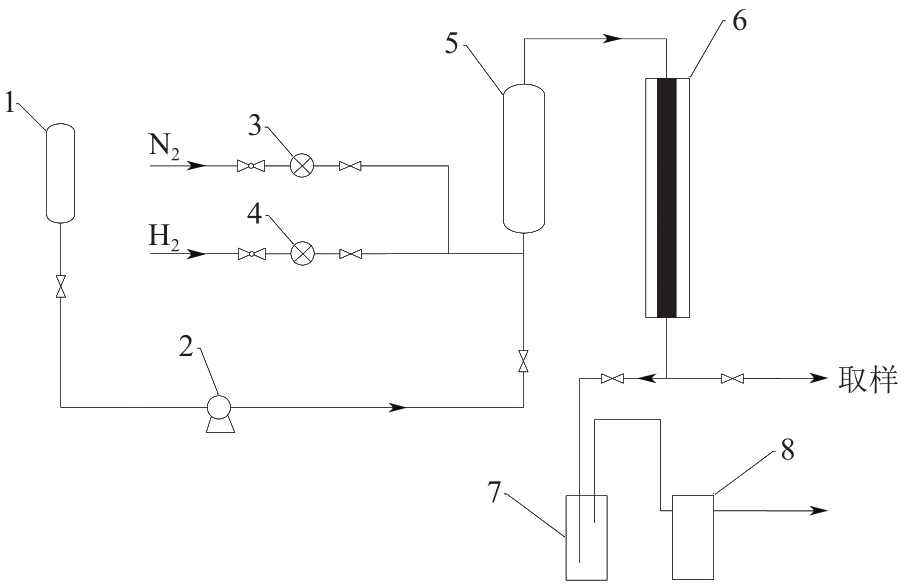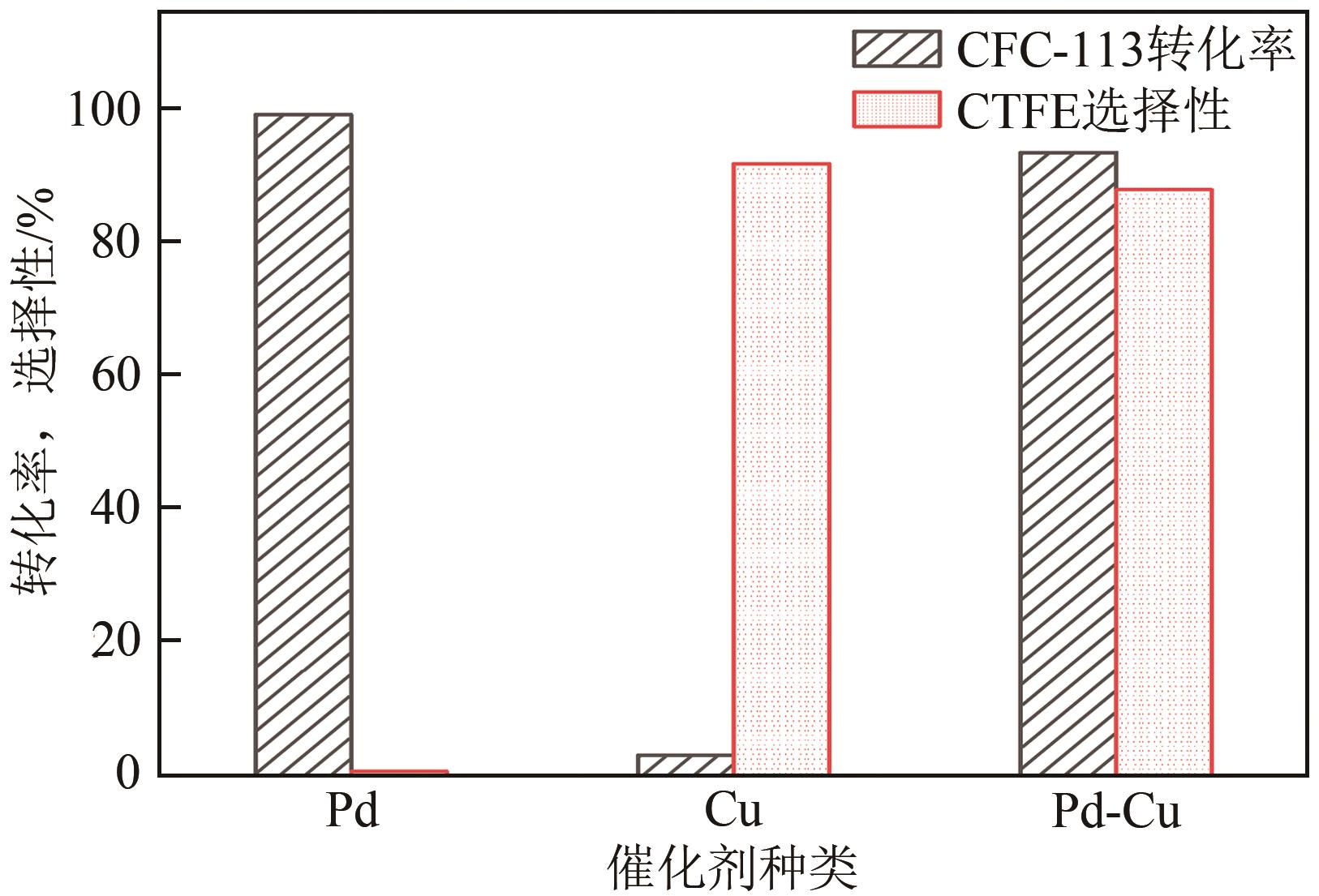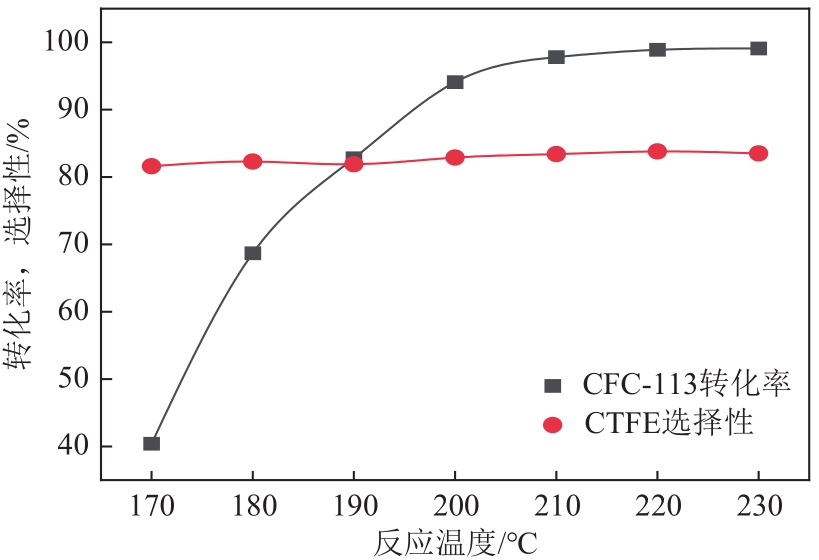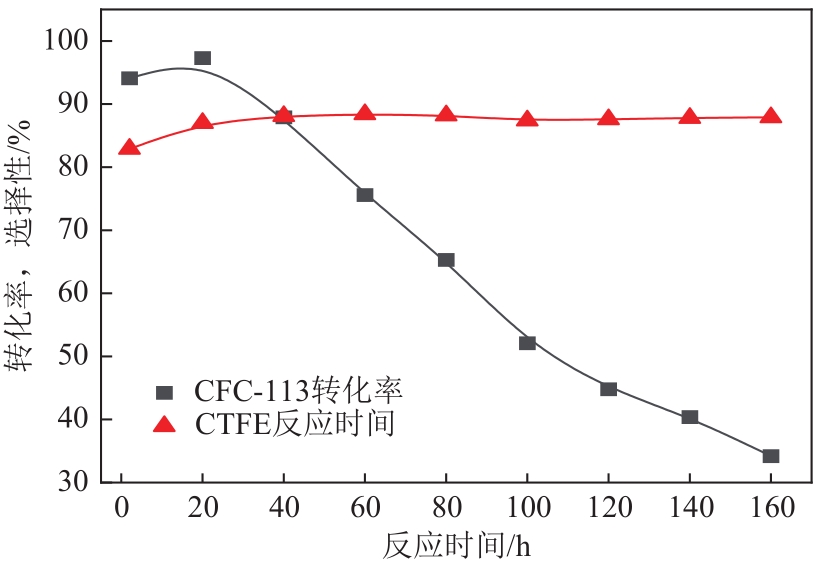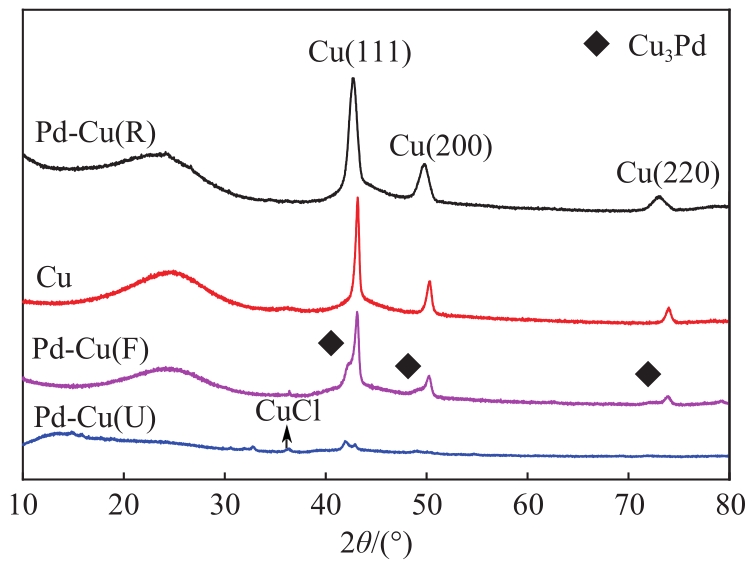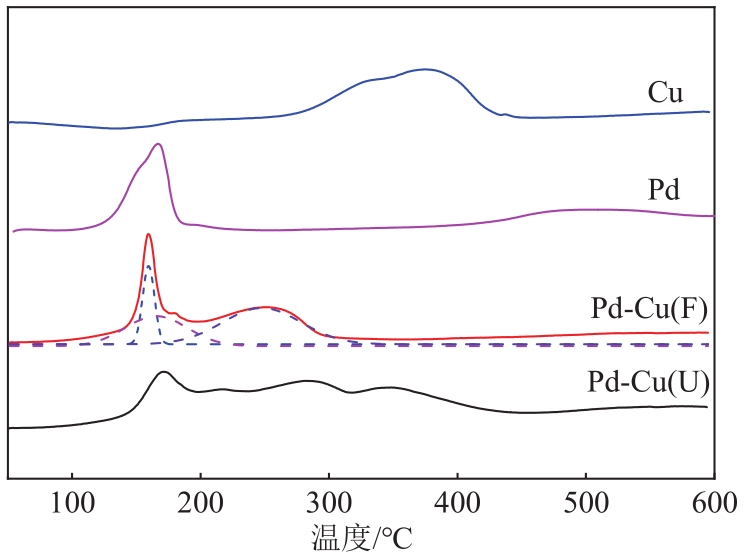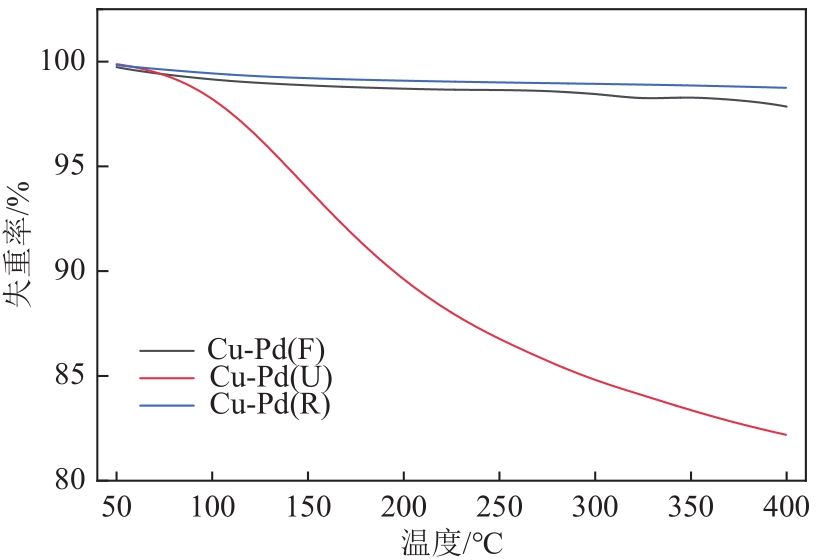| 1 |
陈淼, 李玲, 刘武灿. CFC-113气固相加氢脱氯制备三氟氯乙烯的研究进展[J]. 有机氟工业, 2013(1): 26-29.
|
|
CHEN Miao, LI Ling, LIU Wucan. Research progress on the preparation of trifluorochloroethylene by gas-solid phase hydrodechlorination of CFC-113[J]. Organo-Fluorine Industry, 2013(1): 26-29.
|
| 2 |
赵洋, 蔚辰刚, 周强, 等. Y-Mg-Al-F催化剂用于1, 1, 1, 2-四氟乙烷裂解制备三氟乙烯[J]. 应用化学, 2014, 31(4): 400-405.
|
|
ZHAO Yang, YU Chengang, ZHOU Qiang, et al. Performance of Y-Mg-Al-F catalysts for catalytic pyrolysis of 1, 1, 1, 2-tetrafluoroethane to trifluoroethylene[J]. Chinese Journal of Applied Chemistry, 2014, 31(4): 400-405.
|
| 3 |
李玲, 刘武灿, 石能富, 等. 三氟氯乙烯的合成及性质[J]. 浙江化工, 2015, 46(3): 7-11.
|
|
LI Ling, LIU Wucan, SHI Nengfu, et al. Preparation and properties of trifluorochloroethylene[J]. Zhejiang Chemical Industry, 2015, 46(3): 7-11.
|
| 4 |
BELMORE E, EWALT W, WOJCIK B. Production of polyperfluorovinyl chloride [J]. Industrial & Engineering Chemistry, 1947, 39(3): 338-342.
|
| 5 |
MORI Tohru, YASUOKA Tae, MORIKAWA Yutaka. Hydrodechlorination of 1, 1, 2-trichloro-1, 2, 2-trifluoroethane (CFC-113) over supported ruthenium and other noble metal catalysts[J]. Catalysis Today, 2004, 88(3/4): 111-120.
|
| 6 |
OHNISHI Ryuichiro, WANG Wenliang, ICHIKAWA Masaru. Selective hydrodechlorination of CFC-113 on Bi- and Tl-modified palladium catalysts[J]. Applied Catalysis A: General, 1994, 113(1): 29-41.
|
| 7 |
LEROT L, WILMET V, PIROTTON J. Process for preparation of chlorotrifluoroethylene and of trifluoroethylene from 1,1,2-trichloro-trifluoroethane and catalytic composition used in this process: EP 0747337B[P]. 2000-12-27.
|
| 8 |
蔡光宇, 李文双. 催化加氢脱氯制取三氟氯乙烯和三氟乙烯所用催化剂: CN1351903A[P]. 2002-06-05.
|
|
CAI Guangyu, LI Wenshuang. Catalystic hydrogenation and dechlorination catalyst for preparing trifluorochloroethylene and trichloroethylene: CN1351903A[P]. 2002-06-05.
|
| 9 |
蔡光宇, 李文双, 马振彦. CFC-113催化剂加氢脱氯制取三氟氯乙烯的催化剂及其制备方法: CN1460549A [P]. 2003-12-10.
|
|
CAI Guangyu, LI Wenshuang, MA Zhenyan. Catalyst for preparing trifluorochloroethylene by using CFC-113 catalytic hydro-dechlorination and its preparation method: CN1460549A [P]. 2003-12-10.
|
| 10 |
李猷, 曹育才. 氯氟烃加氢脱氯催化剂的研究进展[J]. 化工进展, 2004, 23(1): 47-50.
|
|
LI You, CAO Yucai. Advance in catalytic hydrodechlorination of chlorofluorocarbons[J]. Chemical Industry and Engineering Progress, 2004, 23(1): 47-50.
|
| 11 |
THOMPSON C D, RIOUX R M, CHEN N, et al. Turnover rate, reaction order, and elementary steps for the hydrodechlorination of chlorofluorocarbon compounds on palladium catalysts[J]. The Journal of Physical Chemistry B, 2000, 104(14): 3067-3077.
|
| 12 |
AGARWAL Shirish, AL-ABED Souhail R, DIONYSIOU Dionysios D. Enhanced corrosion-based Pd/Mg bimetallic systems for dechlorination of PCBs[J]. Environmental Science & Technology, 2007, 41(10): 3722-3727.
|
| 13 |
WANG Zhiqin. Catalytic hydrodecorination of 1,2-dicoroehtane over Pd-Cu/γ-Al2O3 catalysts[J]. Environmental Chemistry, 2012, (2): 144-149.
|
| 14 |
FANG Deren, LI Wanjun, ZHAO Jinbo, et al. Catalytic hydrodechlorination of 4-chlorophenol over a series of Pd-Cu/γ-Al2O3 bimetallic catalysts[J]. RSC Advances, 2014, 4(103): 59204-59210.
|
| 15 |
MUKHERJEE Parthasarathi, ROY Partha Sarathi, MANDAL Kaustab, et al. Improved catalysis of room temperature synthesized Pd-Cu alloy nanoparticles for anodic oxidation of ethanol in alkaline media[J]. Electrochimica Acta, 2015, 154: 447-455.
|
| 16 |
SOARES O S G P, ÓRFÃO J J M, RUIZ-MARTÍNEZ J, et al. Pd-Cu/AC and Pt-Cu/AC catalysts for nitrate reduction with hydrogen: influence of calcination and reduction temperatures[J]. Chemical Engineering Journal, 2010, 165(1): 78-88.
|
| 17 |
刘文栋, 张成会, 陈传霞, 等. 超薄钯铜纳米片组装纳米花的构建及其氧还原性能[J]. 化工进展, 2021, 40(11): 6246-6253.
|
|
LIU Wendong, ZHANG Chenghui, CHEN Chuanxia, et al. Engineering ultrathin PdCu nanosheets-composed nanoflowers with high catalytic activity for oxygen reduction reaction[J]. Chemical Industry and Engineering Progress, 2021, 40(11): 6246-6253.
|
| 18 |
WIERSMA Andre, VAN DE SANDT Emile J A X, DEN HOLLANDER Marion A, et al. Comparison of the performance of activated carbon-supported noble metal catalysts in the hydrogenolysis of CCl2F2 [J]. Journal of Catalysis, 1998, 177(1): 29-39.
|
| 19 |
FENG Yafen, WANG Li, ZHANG Yanhui, et al. Deactivation mechanism of PdCl2-CuCl2/Al2O3 catalysts for CO oxidation at low temperatures[J]. Chinese Journal of Catalysis, 2013, 34(5): 923-931.
|
| 20 |
JIANG Zhao, GONG Xiang, GUO Shuyi, et al. Engineering PdCu and PdNi bimetallic catalysts with adjustable alloying degree for the dehydrogenation reaction of dodecahydro-N-ethylcarbazole[J]. International Journal of Hydrogen Energy, 2021, 46(2): 2376-2389.
|
| 21 |
WEN Chao, YIN Anyuan, CUI Yuanyuan, et al. Enhanced catalytic performance for SiO2-TiO2 binary oxide supported Cu-based catalyst in the hydrogenation of dimethyloxalate[J]. Applied Catalysis A: General, 2013, 458: 82-89.
|
| 22 |
PLATZMAN Ilia, BRENER Reuven, HAICK Hossam, et al. Oxidation of polycrystalline copper thin films at ambient conditions[J]. The Journal of Physical Chemistry C, 2008, 112(4): 1101-1108.
|
 ), LIAO Xiangzhou2(
), LIAO Xiangzhou2( ), SU Xiaoli2, SUI Zhijun1(
), SU Xiaoli2, SUI Zhijun1( )
)
